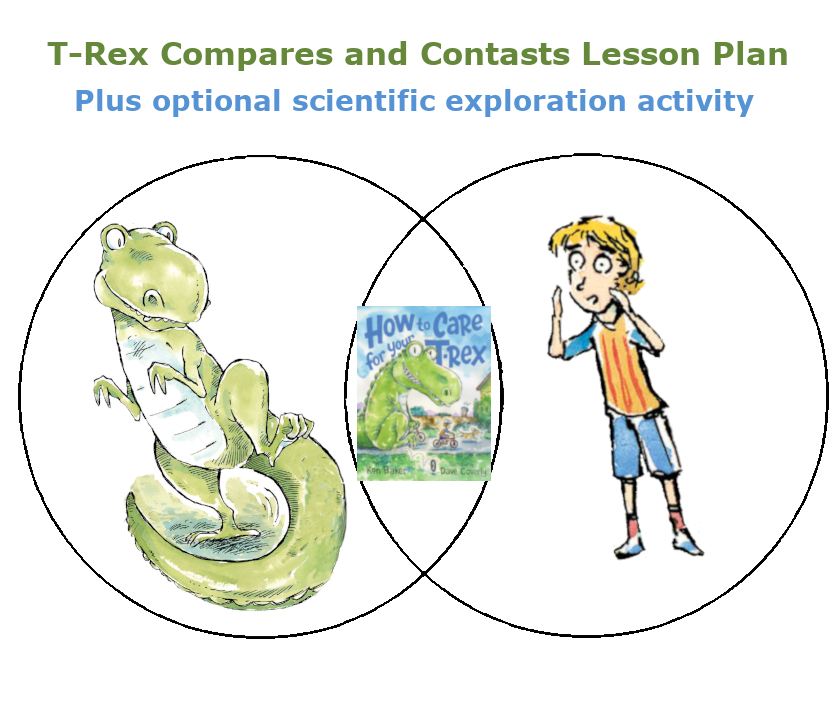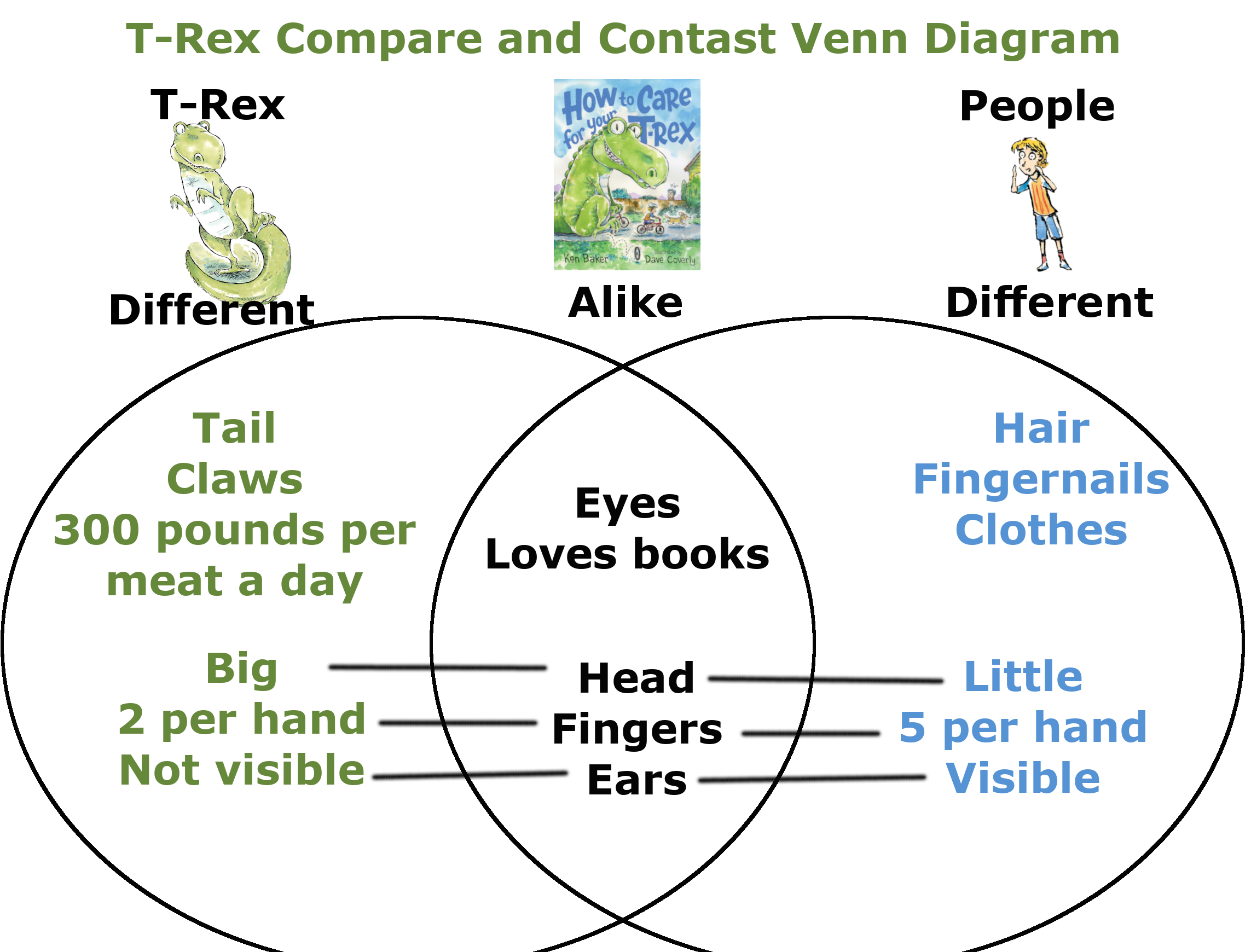Compare and Contrast lesson plan materials:

Compare and Contrast lesson plan activity time: 20-60 minutes, depending on use of optional exercises.
Objective of Compare and Contrast lesson plan: Help teachers achieve common core standards for comparing and contrasting by teaching students how to compare and contrast using similarities and differences between a T-Rex and humans as discussed in the picture book How to Care for Your T-Rex. Include optional scientific discovery and exploration compare and contrast section.
Step 1 - Introduce Comparing and Contrasting
Explain that comparing and contrasting involves looking at things and figuring out how they are similar (alike)
and how they are different. Tell the students that comparing is when you identify things that are alike or
similar between two or more things. Add that contrasting is when you identify things that are not alike or
that are different between two or more things.
To give them the opportunity to compare and contrast, read the picture book How to Care for Your T-Rex to
your students and ask them to listen for similarities and differences between the T-Rex and people.
Step 2 - Identify similarities and differencess
After reading the story, write Alike on the top middle of your chalkboard. T
hen write T-Rex differences on the top left and People differences on the top right.
Ask the students to name things that are similar between the two and write those on the chalkboard under Alike .
When doing this you might want to note that some of the things that are alike, also have differences. For example,
both people and T-Rex have heads, but people have little heads compared to T-Rex, so you might write head (big vs. small).
 Next, ask how the T-Rex and People are different. Differences for T-Rex might include Tail, Claws, Eats 300 pounds
, etc. When doing this you might want also to note that some of the things that are different, also have similarities,
such (2 fingers on each hand vs 5 fingers on each hand). Differences for people might include Hair, Fingernails,
Clothes, Visible Ears, etc.
Next, ask how the T-Rex and People are different. Differences for T-Rex might include Tail, Claws, Eats 300 pounds
, etc. When doing this you might want also to note that some of the things that are different, also have similarities,
such (2 fingers on each hand vs 5 fingers on each hand). Differences for people might include Hair, Fingernails,
Clothes, Visible Ears, etc.
Step 3 - Create a Compare and Contrast Venn Diagram
Explain that sometimes it helps to see the similarities
and differences between things by creating what is called a Venn diagram.
Create a Venn diagram on the board by drawing a circle that encloses all words under
Alike and all the words under the left side Differences . Draw a second circle that
encloses all words under Alike and all the words under the right side Differences .
Explain that where the circles overlap shows the items similarities, and where they
don t overlap shows the differences. For the Alike items that have some differences,
draw a line from each side of the word into the Differences circle and write what
the difference is in the corresponding circle ( Big----Head---Little).
Optional Scientific Exploration Comparing and
Contrasting reinforcement assessment activity:
Give each student a copy of the
Explain to students that scientists believe that birds and crocodiles
are the closest living relatives to the T-Rex. When trying to learn
about the T-Rex, sometimes scientist compare and contrast what they know
about birds and crocodiles to form a hypothesis about the T-Rex. For
example, from the fact that both crocodiles and birds both lay eggs,
you can form the hypothesis that T-Rex probably laid eggs too.
A good scientist would look at other evidence (i.e. fossils and other
information) to prove or disprove that hypothesis. Sometimes scientist
form a hypothesis based on a characteristic that only the bird or the
crocodile has, but they will rely on information from other sources
before doing so. If neither the crocodile nor bird has a certain
characteristic, it s unlikely that the T-Rex did either.
Ask your students to decide if a T-Rex hypothesis that you give
them is probable or not by creating a crocodile and bird Venn
diagram and then using the following formula:
To print this lesson plan: Download a printer-friendly PDF version of the the T-Rex Compares and Contrasts Lesson Plan with handout
Copyright 2001-2025 by Ken Baker
Heaven's Warrior cover by Ken Baker
Old MacDonald had a Dragon pictures by Christopher Santoro
Brave Little Monster pictures by Geoffrey Hayes
Cow Can't Sleep pictures by Steve Gray
How to Care for your T-Rex pictures by Dave Coverly